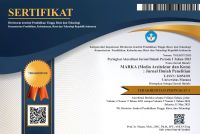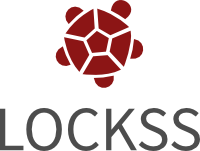Author Guidelines
GUIDELINES FOR AUTHOR
Submission of Manuscripts
Manuscripts must be submitted in Indonesian and English, original, unpublished. The essay must range from 4000 to 5000 words, except in certain conditions. The full paper template and format is provided by the managing editor.
If the content and format of the essay are in accordance with the managing editor, the paper will be sent to the reviewer for a double-blind peer review process. Revisions may be requested according to reviewers instructions and comments. The revised paper will be assessed by the editorial board in making decisions to accept or reject the paper.
Script Preparation
Posts are compiled based on the following systematics:
Title (must be clear, straightforward, and informative, and does not exceed 12 words), Author Name, Author Affiliation
Abstract (150 - 250 words)
Abstract must be written using 1 paragraph with range 150 - 250 words. The font used is Times New Roman 11 pts. The abstract must explain about: research gap, research objectives, analytical techniques, empirical findings, and practical implications. Keywords should reflect important concepts in the article.
Introduction (500 - 2,000 words)
The introduction is written without subtitles/sub-chapters and states the beginning of the substance of the article which contains topics, phenomena/ research gaps/ theory gaps, problems, research objectives, state of the art, originality, grand theory/ theory used in research, and formulation of hypotheses. The introduction offers theoretical concepts, ideas, and presents the findings of previous research as a comparison, as well as strengthening, enriching, and improving discussion, analysis, and interpretation. The presentation should be chronologically coherent and the logical relationship between one paragraph and the next should be clear.
Research methods (500 - 1,000 words)
The method is sufficient information for the reader to follow the research flow well so that readers who will review or develop similar research get an overview of the steps of the research. This section consists of: population and sample, operationalization research variables, data used (types and sources), data collection techniques, and data analysis techniques (model analysis).
Results and Discussion (500 - 1,500 words)
The results are presented systematically, written without sub-chapters, and written in full first, then the author writes the results of the discussion. The results of the narrative containing information taken from the data do not tell what it is, but tell the meaning of the data or information. For information clarification purposes, the author may add tables, figures, etc. In addition, the results also present the items listed in the research objectives or the results of testing the proposed hypothesis along with every step taken for testing as written in the method section.
The discussion consists of interpreting the results, developing arguments by linking the results, theories, and opinions, including comparisons with the results of previous studies. It is also important to increase the possibility of the results of his research contributing to the development of science. This section does not rewrite the research data.
Conclusion (1,000 - 1,500 words)
Conclusions answer the research objectives or studies based on a more comprehensive understanding of the results and discussion of research. Presentation of conclusions is not in the form of point numbers but in the form of descriptive paragraphs.
Acknowledgement (Optional)
The author may express his gratitude to those who support and contribute to this research. This section can be omitted.
References
Only references which are cited in the text should be included in the Reference List. Literature sources or reference sources are the longest 10 years back with a minimum of 10 references. 80% of referrals are primary (scientific journal articles/conferences) and 20% are secondary (sources from books/websites). This is to get more up-to-date information. In writing it is highly recommended to use a Reference Manager such as References (Microsoft Word), Mendeley, EndNote or Zotero. It is not recommended to write references manually. Inclusion of the DOI number of the referenced source is highly recommended. Statera uses APA Citation Style with DOI Style method. References within the text will be shown in bracket by quoting first, the author’s name followed by a comma and year of publication all in round bracket, e.g. (Tribbiani, 2003).
References should appear at the end of the article, arranged in alphabetical order by the first author’s surname as follows:
For books: surname, initials, (year), title, publisher, place of publication
For journals: surname, initials, (year), title, journal, volume, number, pages
For conference papers: surname, initials, (year), “title”, conference name, place, pages
Example:
Book
Pescod, M. B. (1989). Environmental Engineering, Wiley. London: Wiley.
Pescod, M. B. and Mara, D. (1987). Sewage Treatment, In Pescod, M. B. (Ed), Water and Wastewater Treatment. London: Wiley. pp 135-155.
Journal
Wakeman, R. A. (1989). Ultrasonic Cleaning of Membrane Processes. Journal of Membrane Science, 3(2):34-41.
Conference Paper
Suleyman, A. M. (1999). Use of Morringa Oleifera as Coagulant in Water Treatment. Proceedings of the International Conference on Water Treatment, Sarawak, Malaysia, pp 139-145.
Pictures and Tables
Figures and tables must be included within the text rather than grouped at the end of the paper. Captions should be centred with respect to figures and tables and numbered consecutively. Table headings must be placed above tables, and figure captions placed underneath figures.
To facilitate clear reproduction, all photographs and images must be sent in their originals and cited the original sources.



















